If you’re standing on the brink of a home renovation, feeling overwhelmed by the endless flooring options, I get it.
I was there too. But let me cut through the noise for you. If you want a floor that marries stunning, high-end aesthetics with the resilience needed for real life—spills, pets, kids, and all—you need to seriously consider Malibu Wide Plank.
This isn’t just another flooring choice; it’s an investment in your home’s beauty and your own peace of mind. For a durable, waterproof, and breathtakingly beautiful foundation for your life, your search should start and end here.
My Journey With Malibu Wide Plank
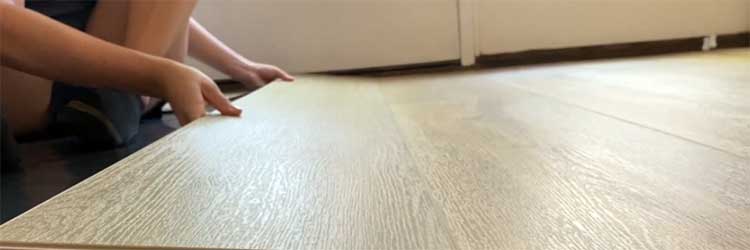
The decision to rip out the old, tired carpet in our main living area was one part excitement, one part sheer terror.
For years, I had dreamed of the clean, expansive look of hardwood, but the reality of our chaotic household—two dogs with perpetually muddy paws, a toddler who views the floor as his personal canvas, and a husband prone to spilling his morning coffee—made traditional hardwood a non-starter.
I needed something that looked like a million bucks but could withstand a daily apocalypse. My research led me down a rabbit hole of Luxury Vinyl Plank (LVP), and that’s where I first stumbled upon Malibu Wide Plank.
I was immediately drawn to the visuals. The planks were, as the name suggests, impressively wide, which I knew would make our moderately sized living room feel more open and grand.
The color I settled on, ‘French Oak,’ had this incredible texture and color variation that looked astonishingly like real, reclaimed wood. It wasn’t flat or plasticky like some of the other samples I had seen.
It had depth. Still, I was skeptical. Could something that looked this good actually be tough enough for us?
The installation process was my first pleasant surprise. My husband and I are moderately handy, so we decided to tackle it ourselves. The click-lock system was intuitive, and the planks felt substantial and well-made in our hands.
They clicked together with a satisfying, solid sound, not a flimsy snap. Within a weekend, we had transformed our space. The immediate impact was staggering. The room felt brighter, larger, and infinitely more sophisticated.
The wide planks minimized the number of seams, creating a smooth, flowing surface that was just stunning to look at. But the real test, of course, was yet to come. Life had to happen on these new floors. And happen it did.
The Undeniable Pros of Choosing Malibu
After living with these floors for over a year, I can confidently break down what makes them such a fantastic choice. It goes far beyond just their good looks.
This flooring has genuinely improved our daily life, reducing my stress about messes and elevating the feel of our entire home. The benefits are tangible and, in my opinion, make it a top contender in the market.
- The ‘Wow’ Factor is Real
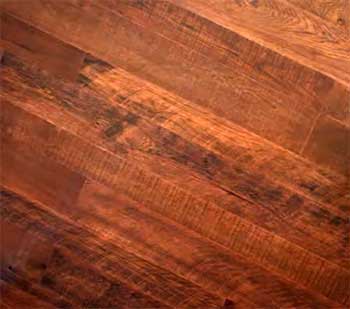
Let’s start with the most obvious benefit: the aesthetics. The ‘wide plank’ aspect isn’t just a marketing gimmick.
The typical plank widths, often ranging from 7 to 9 inches, create a sense of scale and luxury that you just don’t get with standard 3 or 5-inch planks.
In our open-concept living area, this has made a world of difference.
The floor feels less busy and more cohesive, creating an unbroken visual plane that makes the space feel expansive and modern. The high-definition printing on these planks is also top-tier.
The ‘French Oak’ we chose has realistic knots, grain patterns, and subtle color shifts that mimic authentic hardwood beautifully. I’ve had guests bend down to touch it, completely convinced it was real engineered hardwood until I told them otherwise.
It has that premium look without the associated premium price tag or maintenance anxiety.
- Built for the Real World: Durability and Waterproofing
This is where Malibu Wide Plank truly shines for a family like mine. The promise of being 100% waterproof isn’t an exaggeration. We’ve tested it, unintentionally of course.
From knocked-over glasses of water to the dog’s water bowl sloshing everywhere, moisture just beads up on the surface. There’s no panic, no frantic rush to sop it up before it seeps into the core and causes swelling or warping.
I just wipe it up, and it’s like it never happened. This peace of mind is invaluable, especially in areas like kitchens, bathrooms, or entryways.
Beyond being waterproof, the wear layer is impressively tough. The top layer of LVP is what protects it from scratches, scuffs, and dents. Malibu’s wear layer has stood up to the constant clatter of dog nails, toys being dragged and thrown, and furniture being scooted around.
While it’s not indestructible (no floor is), it is incredibly scratch-resistant. After a year of heavy traffic, I have yet to find a significant scratch. Minor scuffs from, say, a black-soled shoe, wipe away easily with a damp cloth.
This durability means the floor looks just as good today as the day we installed it, which is more than I can say for any other flooring I’ve owned.
Cons of Malibu Wide Plank To Consider

No product is perfect, and it’s only fair to talk about the aspects that might not be ideal for everyone.
While my experience has been overwhelmingly positive, there are a few potential downsides to Malibu Wide Plank that you should be aware of before you commit. Being informed about these points will help you make a decision that you’ll be happy with for years to come.
- The Subfloor Imperfection Issue
One of the most critical factors for a successful LVP installation is having a perfectly flat and level subfloor. This is true for all floating floors, but it seems especially pertinent for wide planks.
Because the planks are so long and wide, any significant dips or bumps in the subfloor underneath will be more noticeable. You might experience a slight bounce or a hollow sound when you walk over an uneven spot.
If the subfloor is too irregular, it can even put stress on the locking mechanisms over time, potentially leading to gaps or planks unlocking. We were fortunate that our concrete slab was in pretty good shape, but we still had to spend a full day grinding down some high spots and using a self-leveling compound in a few low areas.
You absolutely cannot skip this prep work. If you’re not prepared to invest the time and potentially extra money into subfloor preparation, you might not get the perfect, solid feel you’re hoping for.
- It’s Not Real Wood
While it’s one of the most realistic wood-look products I’ve ever seen, at the end of the day, it’s not wood. It doesn’t have the same feel underfoot, nor does it have the unique warmth and character that changes with age like real hardwood.
For some people, this is a deal-breaker. If you are a purist who loves the authentic feel, smell, and sound of solid or engineered hardwood, then no LVP, no matter how high-quality, will be a perfect substitute.
Additionally, unlike hardwood which can be sanded and refinished multiple times to erase wear and tear and change the color, LVP cannot. If a plank gets severely damaged, you have to replace that specific plank, which can be a bit of a process.
Its lifespan is finite; once the wear layer is compromised, the floor is done.
Maintenance And Care Tips For Malibu Wide Plank
One of the biggest selling points for me was the promise of low maintenance, and I’m happy to report that it’s true.
Taking care of Malibu Wide Plank flooring is incredibly simple, but following a few key practices will ensure it stays looking as beautiful as the day you installed it for years to come. Forget the special waxes, polishes, or steamers you might need for other types of flooring; this is all about simple, consistent cleaning.
- Your Daily and Weekly Cleaning Routine
The best way to keep your floors looking great is to prevent the buildup of dirt and grit, which can act like sandpaper over time and dull the finish. I make it a point to sweep or vacuum the main traffic areas every day or two.
A soft-bristle broom works perfectly, but I prefer using my cordless vacuum with the hard floor head attachment. It’s quick, easy, and sucks up all the pet hair and crumbs effectively. Crucially, make sure you disengage the beater bar or rotating brush on your vacuum.
A stiff, spinning brush is designed for carpets and can scratch or wear down the surface of your LVP over time.
For a more thorough weekly clean, I use a microfiber dust mop first to pick up any fine dust, followed by a damp mop. The key word here is damp, not soaking wet. Even though the planks themselves are waterproof, you don’t want excess water sitting on the floor or seeping down into the subfloor at the edges of the room.
I use a spray mop with a washable microfiber pad. For the cleaning solution, you should absolutely avoid harsh chemicals like bleach, ammonia, or abrasive cleaners. These can damage the protective wear layer.
A simple solution of a few drops of pH-neutral cleaner mixed in water is all you need. You can find cleaners specifically formulated for LVP, but a small amount of gentle dish soap in a spray bottle of water works wonders too. I lightly mist a section of the floor and then wipe it with the microfiber mop. It dries in minutes with no streaks.
- Tackling Spills and Preventing Scratches
The beauty of a waterproof floor is that spills are a non-issue. When something spills, simply wipe it up with a cloth or paper towel. For sticky residues, a damp cloth with a bit of my pH-neutral cleaning solution will lift it right off. There’s no need to panic.
Preventing scratches is more about being proactive. While the wear layer is tough, it’s not invincible against deep gauges. The number one rule in our house is to put felt pads on the bottom of all furniture legs—chairs, tables, sofas, everything.
I check and replace these pads every few months, as they can wear down or collect grit. For heavy items like the sofa or entertainment center, I use larger, sturdier furniture sliders. When moving heavy appliances like a refrigerator, never drag them directly across the floor.
Lay down a piece of plywood or a few layers of sturdy cardboard to protect the planks. We also use doormats at every entrance. This simple step traps a huge amount of dirt, gravel, and moisture at the door, preventing it from ever being tracked onto the floor in the first place.
An In-Depth Comparison To Other Flooring Brands
When you’re shopping for flooring, it’s easy to get lost in a sea of names and technical specs. I looked at so many brands that my head was spinning. To help you navigate, I want to compare my experience with Malibu Wide Plank to some of the other major players I considered.
This isn’t about declaring one universally “better,” but about understanding the different strengths and weaknesses so you can find the right fit for your specific needs and budget.
- Malibu Wide Plank Versus Style Selections Flooring
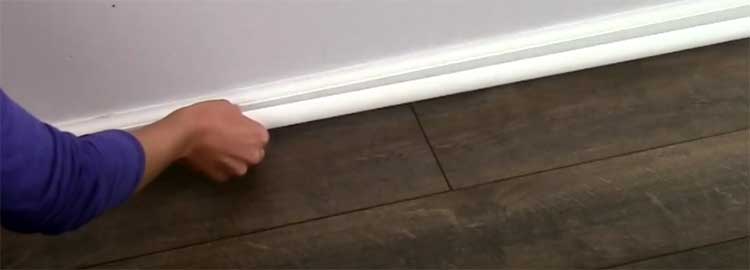
When I was at the big box stores, Style Selections was one of the most visible and budget-friendly options. It’s often considered an entry-level LVP. The primary appeal here is, without a doubt, the price point.
It’s significantly cheaper per square foot than Malibu Wide Plank. If your primary driver is budget, Style Selections is very tempting. However, when I put the samples side-by-side, the differences became immediately apparent.
The visual depth of the Malibu planks was far superior. The Style Selections prints looked flatter, more repetitive, and less convincing as real wood.
The texture, or embossing, on the Malibu planks aligned more closely with the wood grain pattern on the print, a feature known as “embossed in register,” which adds to the realism. The Style Selections texture felt more generic and uniform.
Beyond aesthetics, the construction felt different. The Malibu planks felt denser and more rigid. This rigidity, often coming from a Stone Polymer Composite (SPC) or Wood Polymer Composite (WPC) core, contributes to its durability and ability to hide minor subfloor imperfections better than a flimsier plank.
Style Selections flooring often uses a more basic PVC core, which can feel less substantial. The wear layer on Malibu products is also typically thicker, measured in mils. A thicker wear layer (e.g., 20 mil vs. 6 or 12 mil) means more protection against scratches and scuffs.
For a high-traffic area like my living room, the extra investment in Malibu’s durability and superior visuals felt like a necessary and worthwhile trade-off. For a low-traffic guest room or a tight budget renovation, Style Selections could be a perfectly adequate choice.
- Malibu Wide Plank Versus AquaProof Flooring
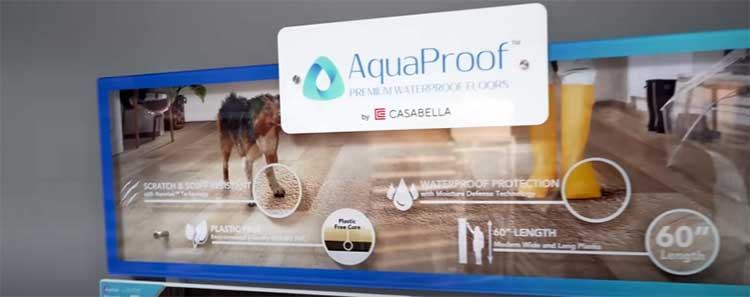
AquaProof was another brand that caught my eye, largely because of its name. Like Malibu, its marketing is heavily focused on its waterproof capabilities, making it a direct competitor for anyone concerned about moisture.
Both brands typically feature a robust waterproof core, making them suitable for any room in the house, including basements and bathrooms. Where I found the distinction lay was in the breadth of style and design.
Malibu Wide Plank, by its very nature, specializes in that wide-plank, often rustic or coastal-inspired aesthetic. They do it, and they do it very well. Their color palette is curated to enhance that specific look.
AquaProof, on the other hand, seemed to offer a slightly wider range of styles, including some standard-width planks and even tile and stone looks. If you aren’t sold on the wide-plank trend, AquaProof might present more options.
In terms of quality, I found them to be quite comparable. Both often use a rigid core construction and have similar wear layer specifications in their mid-to-high-end lines. The decision between them might honestly come down to which brand has the specific color, grain pattern, and plank width that speaks to you the most.
For me, Malibu’s ‘French Oak’ was the perfect combination of color and texture, and its specialization in the wide-plank format gave me confidence that they had perfected that particular style. It felt less like a jack-of-all-trades and more like a master of one.
- Malibu Wide Plank Versus Somerset Hardwood Flooring
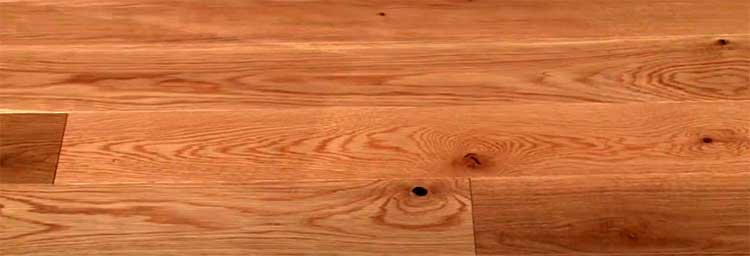
Here, we’re comparing apples and oranges, but it’s a crucial comparison to make because many people (myself included) start out wanting hardwood. Somerset is a well-respected American manufacturer of solid and engineered hardwood flooring.
There is no question that a real Somerset hardwood floor has an authenticity that Malibu, or any LVP, cannot replicate. The feel underfoot, the way it reflects light, the unique character of each individual plank—it’s the real deal.
Furthermore, real hardwood adds significant resale value to a home; it’s a long-term investment that is recognized and sought after by buyers. A Somerset floor can be sanded and refinished multiple times over its lifespan, meaning it could potentially last for generations.
However, this authenticity comes with a list of compromises that I wasn’t willing to make. First, the cost. Somerset hardwood is significantly more expensive than Malibu Wide Plank, both in material cost and installation, which is often best left to professionals.
Second, and most importantly for my lifestyle, is the issue of durability and maintenance. Hardwood is susceptible to water damage. A major spill, a pet accident, or a leaky appliance could ruin a section of the floor.
It also scratches and dents much more easily than a high-quality LVP. The thought of constantly policing my kids and dogs around a brand-new, expensive hardwood floor gave me anxiety.
Malibu gave me the look I wanted with the waterproof, scratch-resistant performance I needed. It was a practical choice that prioritized peace of mind over material purity.
- Malibu Wide Plank Versus Southwind Flooring
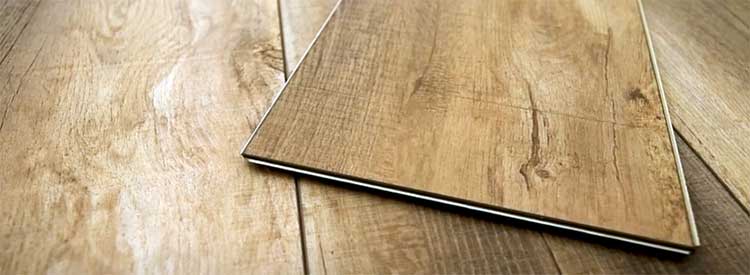
Southwind is another strong competitor in the LVP space, known for producing quality rigid core flooring. I found Southwind’s product line, particularly their ‘Timeless Plank’ or ‘Authentik Plank’ collections, to be very similar to Malibu Wide Plank in terms of construction and performance.
They both offer products with thick wear layers, robust SPC cores, and attached underlayment pads for sound dampening and comfort. Both are excellent choices for busy households needing a durable, waterproof floor.
The main differentiators I found were, again, in the specific aesthetics and perhaps regional availability. Southwind offers a fantastic array of colors and styles, some of which might appeal more to those looking for a classic, traditional wood look, while Malibu often leans into more contemporary, coastal, or rustic vibes.
When comparing specific products, it’s worth looking at the fine print: the exact thickness of the wear layer (measured in mils), the overall plank thickness, and the warranty details. Sometimes one brand might offer a slightly better commercial warranty or a thicker plank for a similar price. For me, the deciding factor was the visual appeal.
The specific color and texture of the Malibu ‘French Oak’ just couldn’t be beaten. It perfectly matched the vision I had for my space. When you’re comparing two high-quality brands like Malibu and Southwind, it often comes down to these personal preferences in design.
I would advise getting samples of both and seeing how they look and feel in your own home’s lighting.
Frequently Asked Questions (FAQ)
“Better” is subjective and depends on your priorities. Both Malibu Wide Plank and LifeProof (a popular Home Depot brand) are excellent choices in the rigid core LVP category, offering waterproof performance and great durability. Malibu Wide Plank, as its name suggests, specializes in the wider plank aesthetic, often excelling in creating rustic, coastal, and modern looks with very realistic textures. LifeProof offers a broader range of options, including various widths, colors, and even tile-look products. The choice often comes down to specific aesthetics. If you’re set on a trendy, wide-plank look, Malibu is a fantastic specialist. You should compare samples of both to see which brand offers the specific color, grain, and texture that you prefer for your home.
Most Malibu Wide Plank products come with a pre-attached underlayment or pad. This pad provides sound dampening, adds a bit of comfort underfoot, and can help smooth over very minor subfloor imperfections. If the product you choose has this pre-attached pad, you should not install an additional underlayment. Doing so can create too much flex and instability in the floor, potentially causing the locking mechanisms to fail. Always check the specific installation instructions for the product you purchase. The only exception might be the use of a vapor barrier (like a 6-mil poly film) if you are installing over a concrete subfloor, which is often recommended to block moisture from below.
The primary disadvantages of wide plank flooring (of any material, not just LVP) relate to installation and subfloor requirements. Because the planks are so wide, they are less forgiving of subfloors that aren’t perfectly flat and level. Dips and humps can cause the planks to feel bouncy, make hollow sounds, or even stress the joints. Meticulous subfloor preparation is non-negotiable. Additionally, from a design perspective, very wide planks might overwhelm a very small, narrow room, making it feel smaller. Finally, if you need to replace a damaged plank in the middle of the floor, a wider plank can be slightly more cumbersome to work with than a narrower one.
Yes, Malibu is widely regarded as a good, reputable flooring brand, particularly within the LVP market. They have carved out a strong niche by focusing on high-quality, durable, and aesthetically pleasing wide plank floors. Consumers and reviewers consistently praise the brand for the realism of its wood-look designs, its robust waterproof construction (typically with an SPC or WPC core), and its strong wear layer that stands up well to pets and kids. While it might be priced slightly higher than some entry-level big-box store brands, the general consensus is that the investment translates into superior aesthetics and long-term performance, offering excellent value for homeowners.
Wrapping Up
I truly hope sharing my experience has given you some clarity. After all the research, installation, and now, living on these floors, I can say with confidence that choosing Malibu Wide Plank was one of the best decisions we’ve made for our home.
If you want that gorgeous, high-end wood look without the high-maintenance lifestyle, I wholeheartedly recommend you get some samples and see for yourself.
It’s a flooring choice that delivers on its promises, giving you a stunning and durable foundation that you and your family can enjoy without worry for many years to come.
